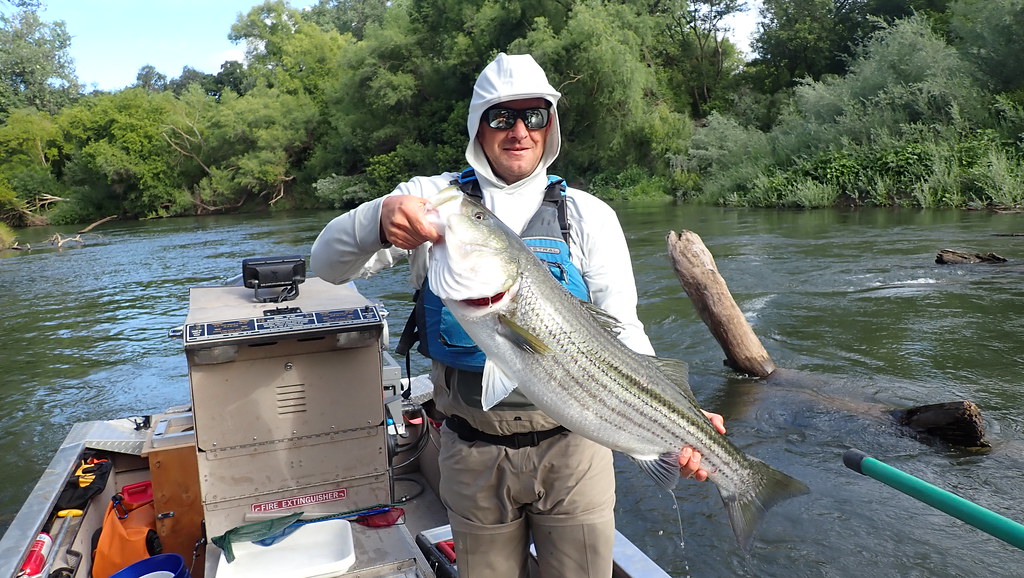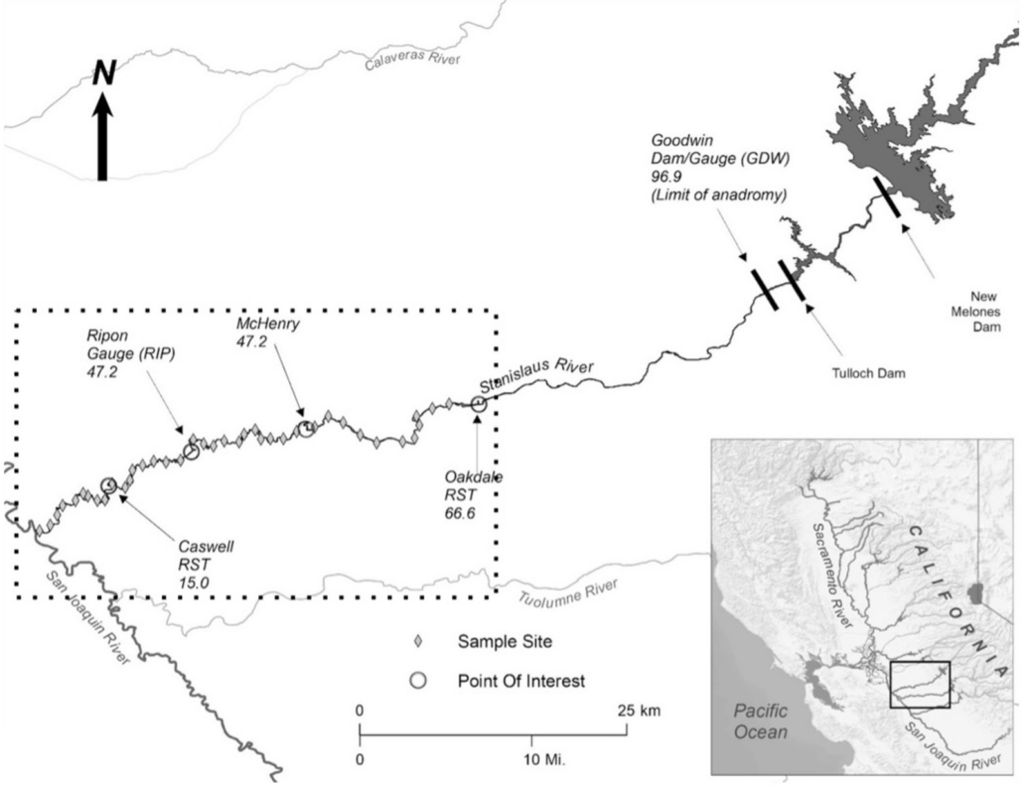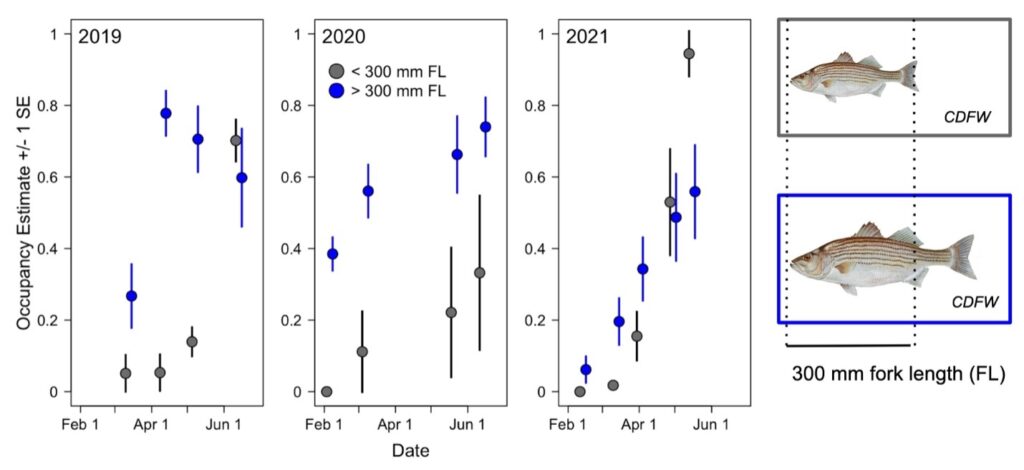Monday June 27, 2022

Fisheries biology and hospitality have an unexpected common interest: occupancy. Just like hotel managers track seasonal trends in occupied and vacant rooms, FISHBIO’s biologists recently conducted a statistical analysis to predict patterns in when striped bass (Morone saxatilis) occupied sample sites on the Stanislaus River. They treated the entire study area as a “hotel” broken down into 39 individual sites, or “rooms,” and looked at whether striped bass either did or did not use these sites over time. This study provides information on fine-scale patterns of striped bass distribution, which is less well understood than their large-scale migration patterns in California. Generally, adult striped bass are known to migrate into rivers throughout the Central Valley to spawn from April to June before returning to the San Francisco Estuary and the Pacific Ocean from summer to fall. However, there are individual exceptions to this trend in adult movement patterns, and juvenile striped bass movement patterns are even more variable. Additionally, most targeted monitoring and research efforts for striped bass have occurred in the Sacramento River Basin and the Sacramento-San Joaquin Delta and limited information is available about seasonal trends in striped bass movements into the San Joaquin River Basin.

To help fill this knowledge gap on striped bass movement patterns, FISHBIO scientists analyzed 2019–2021 catch data from the Native Fish Plan, a multi-year electrofishing survey on the Stanislaus River, which flows into the San Joaquin River. For this analysis, occupancy was defined as the percentage of all 39 study sites (see map above) in which striped bass were present as time progressed from February 1–June 30 of each year. The researchers looked at differences in two size groups of striped bass: small (fork length <300 mm, or ~12 in) and large (fork length ≥300 mm). This size threshold was based on differences in the distributions of fork lengths of striped bass captured during the early (February–April) and the late (May–June) sampling periods of each study year.
The results of this analysis indicated that patterns differed between small and large striped bass occupancy, and patterns also varied within and across study years. Specifically, small and large striped bass migrated into the Stanislaus River at different times, and used distinct areas of the river over time. Large striped bass appeared to migrate into the study area earlier than small fish. Predicted occupancy for small striped bass steadily increased over time during each study year, but was slightly more variable for large fish.

Predicted patterns for striped bass occupancy on the Stanislaus River generally coincided with California-wide migratory patterns: we found that the percentage of sites where striped bass were present tended to increase from February to June. One exception was in 2019, when large striped bass occupancy peaked in April before decreasing (see graph above), which may have been due to relatively high river discharge (ft3/s) for that year compared to subsequent years. The results of the study models suggested that large striped bass were likely present at study sites prior to sampling starting in February, since they were always predicted to be at sites before sampling began. Patterns in how striped bass “check in” and “out” of their “rooms” at our study site show how these fish use specific areas over time, which can help biologists better understand when and where striped bass move in the San Joaquin River Basin. Our study improves knowledge about when distinct size groups of striped bass are present in understudied subregions of California’s Central Valley. This study also provides a foundation for efforts to estimate the abundance of certain size groups of striped bass and to quantify the predatory impacts of select size groups on other fishes.
This story was written by William Ware as part of a capstone project with FISHBIO as part of the Coastal Science and Policy Program at the University of California, Santa Cruz.
This post was featured in our weekly e-newsletter, the Fish Report. You can subscribe to the Fish Report here.
